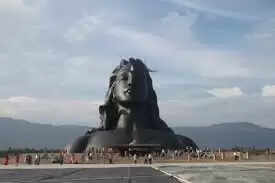Know About The Supreme Adiyogi

Adiyogi signifies Lord Shiva, the Supreme Entity who was the divine origin of yoga and the very initial yogi. It is believed that Adiyogi Shiva is the progenitor of all yogic insight, the source of this wisdom that was initially imparted over 15,000 years back.

Adiyogi Deep Dive
Becoming Adiyogi
As Sadhguru narrates the tale, Adiyogi Shiva transcended his form in both a practice of total stillness and fervent ecstatic dancing in the Himalayas. People gathered to observe Shiva, who did not mind what anyone had to say or thought regarding him. It appeared to all that he had liberated himself from the confines of society. On the day that Shiva attained enlightenment, he became Adiyogi.
First sharing his teachings with his consort, the Goddess Parvati, he taught her 84 yoga postures that are a segment of the Vedic Parampara (the traditional heritage of educators of Advaita Vedanta) to achieve Rajyoga (both the aim of yoga and the method to attain it).
Hindu mythology describes how Matsya, a fish, overheard Adiyogi Shiva’s instructions to Parvati and attained enlightenment. The fish was reborn as Matsyendra, after whom several asanas are named, and was one of these saptarishis.
Alongside Brahma and Vishnu , the 3 Deities form the great triumvirate. Shiva’s function, as the powerful eradicator in the triumvirate, is to annihilate in order to re-create.
The Agama Shastras
The doctrines of Adiyogi were disseminated to humankind through the Agama Shastras, a compilation of manuscripts that have survived to this era. Shaiva, Vaishnava, and Shakta, though not components of the Vedas, are deemed completely genuine and follow the doctrines of the Vedas.
Agama texts are in the form of dialogues in which Shiva, Vishnu, or Shakti discuss four topics (pādas).
1. Jñāna-pāda (divine wisdom concerning metaphysical and philosophical aspects of the universe)
2. Yoga-pāda (facets of the yogic practice – asana, meditation, mantras, yantras, etc.)
3. Carya-pāda (morals and values – how we should conduct our lives in relation to others)
4. Kriya-pāda (action regarding our faith – temple construction, rituals, offerings, etc.)

